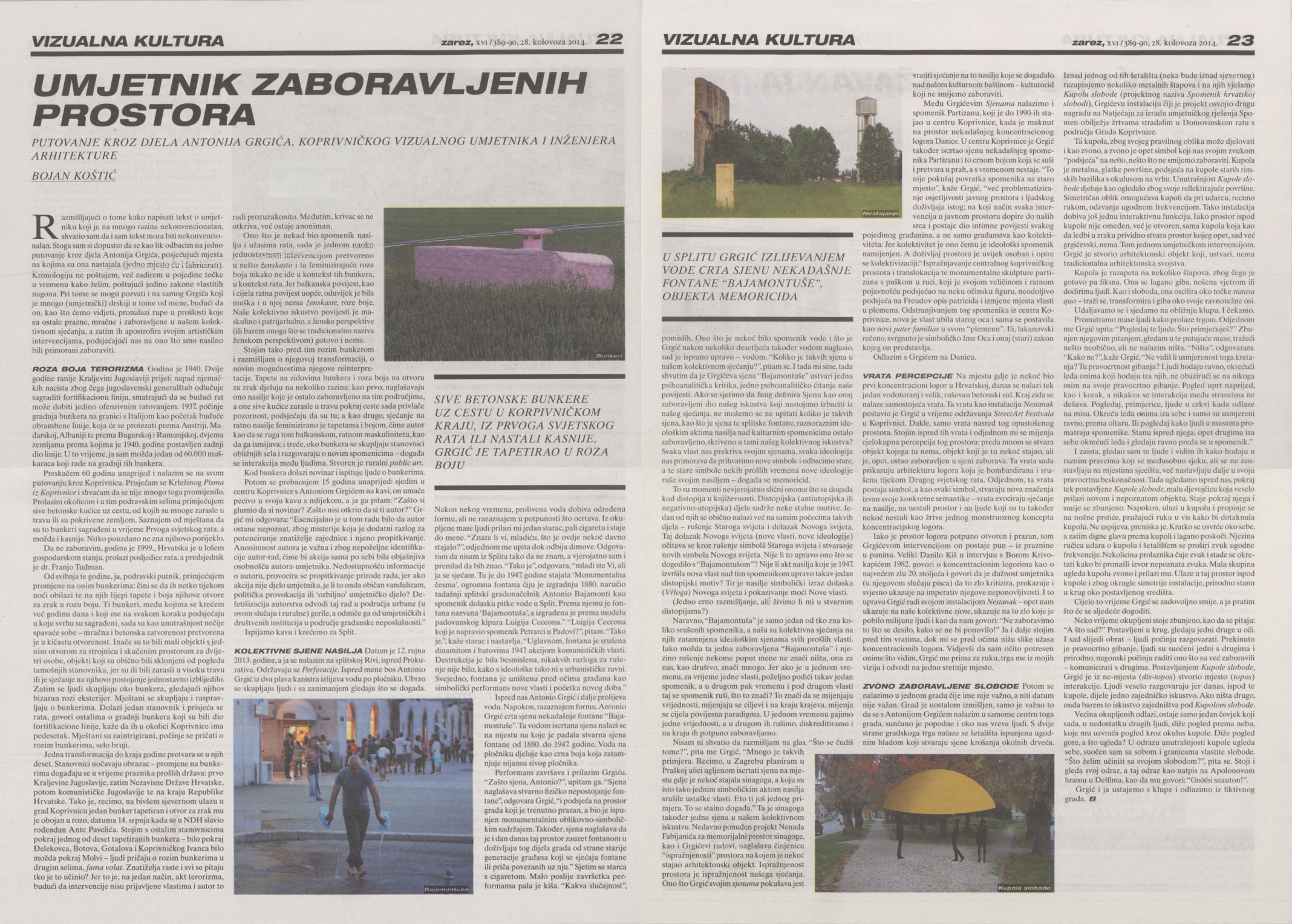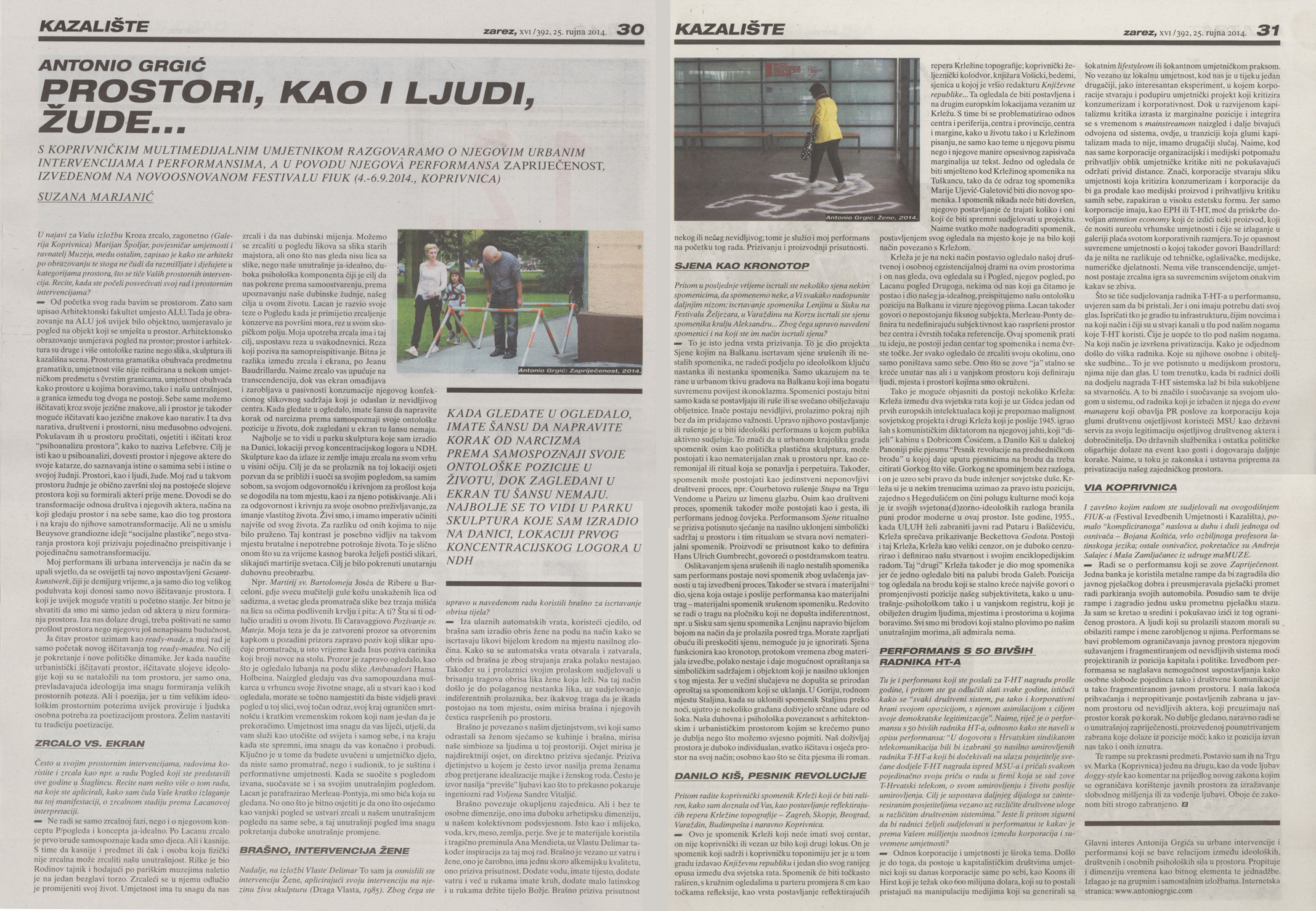"It is entirely logical that, as an architect by training, space - in general terms – is to the author at the center of interest. But it will be difficult to be explained why the setting of this notion of space always ends in its review or even in its abolition. Temporary suspension of functional nature of space and the transfer from its physical to the symbolic dimensions or psychological category is Antonio Grgics main preoccupation. He is exploring the principle of deconstruction and the value of the absent categories. But his intentions are not related to the idea of plastic or formal redesign of space, but to establish such an area with the determinants for non-sculptural expression. It is a conscious act of giving up of plastic and in both its variants: modernist - as installation of forms in the space, and postmodernist – as a redefinition of space and activating the eye and the body of spectator.
His spatial structures with "manipulative" structures are in the service of certain ideas. The observer and the space becomes central, and the object is deprived of its autonomy. However, these "central" position is only conditional because the its position made once of the solid entities is fluctuating, vague and very unstable. In short: there is no steady object, but there is not a homogeneous, stable subject.
Indeed, Grgic spatial design and constructions in the space are trying to abolish the category of the object, or at least in its essential determination of the position of the subject. Setting the role of an observer at the center, he is at the same time – by reconstructing the space structure and putting the mirrors –destroying that position and making it relative.
This whole story starts, therefore, from architecture: it is happening in it, it defines and uses it, and then again is not using its basic function and content. But the author is conceiving a dispersive space in which there is no more definite, stable position of the observer, and thus no stable position of subjectivity.
Some art-historical connotations are unavoidable here:, the thesis about the duality of poetic meaning in architecture, the metonymic and metaphorical figure, the relationship between the individual and the general in architecture, the part and the whole, the indoors and outdoors ... Antonio Grgic structures are readable as metonymic image and are located in a defined space, but with paradoxical dimension that informs and misinforms, teaches and deceives in the same time.
Grgić interventions are simple, almost purist interpretation of space: but in this minimalist concept are summarized many of the previous experiences – both with a general and personal meaning - and with a strong temporal context."
Marijan Špoljar, historian of arts and curator

